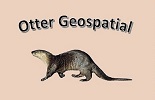In geospatial technology world, “mapping” refers to the acquisition of information about where stuff is and storing that information in specialized computer files called spatial databases. A number of approaches to organizing geographic information are in common use. This section of the website focuses on “raster data”, a concept that uses arrays of cells to represent conditions on the earth’s surface. The terms “data” and “continuous surface” are sometimes used to describe raster data.
Raster/Image Concepts
Articles discussing basic principles of raster/image data CHECK IT OUT
Orthophotos and Related Raster Datasets
Articles discussing orthophotos and related raster datasets CHECK IT OUT
********END FOUR BAND SECTION********
Items Below The Line Are Under Construction – Return to Top of Page
Representing the real world as data There are several dozen types and subtypes of geographic data, but folks in learning mode can accomplish a lot using just two basic types: vector and raster. This article describes how data is organized in each of these two data types and the data categories they are typically used for.
CHECK IT OUTThere are several dozen types and subtypes of geographic data, but folks in learning mode can accomplish a lot using just two basic types: vector and raster. This article describes how data is organized in each of these two data types and the data categories they are typically used for.
CHECK IT OUTThis Information Sheet, published by the US Department of Agriculture, describes a family of products frequently encountered in vegetation mapping work.
CHECK IT OUTThis tutorial, published by the Earth Systems Research Center at the University of New Hampshire does a nice job of describing the standard process for displaying a CIR image in ArcMap.
CHECK IT OUTThis article describes steps used to prepare four-band imagery received from the Brown County Land Information Office for use in a vegetation mapping project.
CHECK IT OUT” … MTRI, a research center of Michigan Technological University, is a recognized leader in the research, development and practical application of sensor and information technology to solve critical problems in national security, protecting and evaluating critical infrastructure, bioinformatics, earth sciences and environmental processes…”
CHECK IT OUTDigital Elevation Model (DEM) Factoids and Examples – Elevation Data Types and File Formats
There are a number of accepted approaches to storing elevation data.
Digital Elevation Models
The term Digital Elevation Model (DEM) is thrown around pretty loosely. We prefer to limit its use to elevation data stored as a continuous raster
LiDAR derived DEM
National Elevation Dataset (NED)
Triangulated Irregular Network (TIN)
TIN is a highly specialized data structure used for storing 3-dimensional surfaces, particularly terrain models. A TIN is produced by interpolating triangular “plates” from a set of xyz coordinates.
Downlooking LiDAR Data
The majority of new elevation data is acquired using Light Detection and Ranging (LiDAR) technology. Raw output from a LiDAR survey is in the LiDAR Data Exchange (LAS) file format
